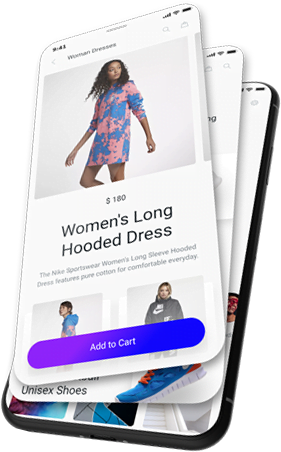What You’ll Find in This Case Study
This is not a story about fancy tools or over-engineered automations. It’s about how we used real UX principles, user empathy, and smart data use to transform an underperforming email channel.
Here are the key tactics we applied:
- Behavior-based segmentation
- User-centered email layout
- Clear and simple language
- Easy opt-in forms
- Emotional + rational subject lines
- A/B testing for optimization
- Frequency control by engagement
- Data-driven product selection
- Category-based personalization
- Clean unsubscribe experience
The Challenge: Increasing Open Rates from 10% to 70%
When I took over the email marketing operation for this retail company, whose name we cannot disclose due to privacy agreements. I was handed a daunting task: a database of more than 2 million emails, with an open rate of just 10%.
The brand’s overarching communication strategy centered on visual inspiration: beautifully styled interiors, emotionally resonant campaigns, and aspirational photography. However, the way this inspiration was delivered through email was completely worn out. Users were disengaged, overwhelmed, and simply stopped opening the messages.
A Critical Starting Point
These were the main issues we encountered at the outset:
- Oversaturation: Users were receiving more than seven emails per week.
- Unclear opt-in practices: Many contacts had been collected through various campaigns without making it explicit that they would receive ongoing email communication.
- Attention fatigue: With no clear value proposition and little to no personalization, emails were either ignored or sent straight to the trash.
In short, we had volume, but we lacked trust and relevance. Without those two elements, no amount of visual design or inspirational content would make a difference.
The Core Principle That Guided the Project
For an entire year, we worked with a very clear mindset:
“It’s better to have a smaller, conscious, and engaged user base than millions of contacts without context or emotional permission.”
With that idea in mind, we began to completely redesign the brand’s email marketing ecosystem from the ground up.
Cleaning to Rebuild Trust: A Major Operation on the Email List
Before even thinking about redesigning templates, testing subject lines, or setting up automated flows, we knew the real issue was deeper. The database itself was not healthy.
The first step was to implement a cleaning and segmentation strategy that prioritized respect for users’ attention and the relevance of every single email sent.
We Classified the Database Into Three Main Segments
1. Engaged Users (Hot Leads)
These were users who:
- Had voluntarily subscribed to the newsletter or promotional emails within the past three months
- Had opened at least one email in the past month
2. Re-engageable Users
These users had been inactive for over a month and were further divided into:
- Inactive for 1 to 3 months
- Inactive for more than 3 months
3. Abandoned Users
These were users with no activity for over six months and no clear record of consent.
An Empathetic Re-engagement Strategy
Users who were no longer part of the active segments stopped receiving regular communications. Instead, for three consecutive months, we sent them just one email per month with a simple, empathetic message:
“What would you like to receive from us by email?”
This small shift not only reactivated 10% of the dormant user base, but also gave us valuable insights into actual preferences, effective emotional language, and unmet expectations.
Personalized Impact Policies: Less Noise, More Precision
We created a dynamic email frequency system where the number of emails each user received depended entirely on their individual behavior:
- If they did not click: They received only one email per week, sent on the day with the highest open rate (Wednesday).
- If they clicked:
- They moved to a list that received two emails per week.
- If they interacted with the second email, they were upgraded to receive three emails per week.
- If they stopped engaging, their frequency was automatically reduced.
This system adjusted exposure intelligently, minimizing fatigue and maintaining relevance at an individual level.
The Result: A Radical Shift Toward True Engagement
After this stage, the database shrank from 2 million to just 125,000 active users. But for the first time, we had an audience that was genuinely interested in what we were sending.
This shift shook internal confidence. Reducing the database so drastically raised concerns, especially from a marketing team used to measuring success by volume. But we already knew we were planting something far more valuable: a foundation built on trust, relevance, and consent.
Growth, Yes. But With Quality: Rebuilding the List With Real Leads
Although the quality of the database had improved dramatically, its reduced size created pressure. To balance quality with growth, we proposed an ambitious yet realistic plan:
Grow the list by 10% per month over the course of a full year, using only fully opt-in, high-intent leads.
Growth Through Simplicity: Three High-Impact Tactics
1. Subscription Form on the Ecommerce Homepage
We designed a prominent banner focused on the benefits of joining the newsletter.
- Headline with inverted pyramid structure: the most compelling value appeared first
“Get inspired and stay updated on offers, contests, and other useful content…” - Terms and conditions rewritten in plain language, targeting a sixth-grade reading level
- These T&Cs were clearly displayed next to the subscription button, not hidden in legal fine print. Benefits came first, followed by conditions — all presented with full transparency
Monthly impact: 7% growth in the email list
2. Peer-to-Peer Recommendation From Within the Email
We included a block inside the emails with a simple emotional nudge:
“Someone you know might need this inspiration. Send it to them!”
When users clicked, they filled out a short form with:
- Their name
- The recipient’s name and email address
The recipient received a personalized email that said:
“[Name] sent you this because they thought it might interest you. Subscribe if you’d like to receive more inspiration like this.”
Monthly impact: 1.5% growth from referrals
3. Opt-In Prompt During Checkout
We added a non-intrusive subscription option during the checkout process.
It was clear, optional and respectful of user intent.
Monthly impact: 1% growth from transactional touchpoints
Combined Result: 9.5% Monthly Growth With Zero Spam
Thanks to these three focused tactics, we achieved sustained 9.5% monthly growth in the email database, all with high-quality, opt-in users.
Later on, with additional content optimizations, that number climbed even higher.
Learning From the Past: We Analyzed Four Years of Subject Lines
We reviewed and categorized every subject line sent over the last four years. Each was sorted into one of four performance quartiles based on open rates:
- Outstanding: significantly above average
- Good: performed above average
- Average: within normal range
- Low: below average
Using this matrix, we analyzed the semantic structure of each subject line. Through a combination of linguistic theory and contextual observation, a clear pattern emerged:
- The highest-performing subject lines were highly emotional
- Good performers combined emotional appeal with rational clarity
- The lowest performers were neutral or purely descriptive
Emotional Strategy With Editorial Discipline
We avoided the common pitfall of relying solely on emotional language. Emotional saturation leads to user fatigue and erodes trust. Instead, we established a content rule based on timing:
- Purely emotional subject lines were reserved for high-impact moments, such as salary dates (1st and 15th of each month)
- Mixed subject lines (emotional plus rational) were used consistently throughout the rest of the month
A/B Testing to Validate the Hypothesis
We ran a controlled test with 10% of the email database:
- Group A (5%) received emails using the editorial rule: emotional plus rational subject lines
- Group B (5%) received only emotional subject lines
First-month results:
- Group B initially saw higher open rates and more users moved to the 2–3 emails/week segment
- By the end of the month, nearly all users in Group B had reverted to receiving only one email per week due to fatigue
Group A, however, maintained stable engagement:
- 30% of users moved into the 3 emails/week segment
- 40% received two emails per week
- The average frequency increased to 2.7 emails per user per week without oversaturation
Examples of Subject Line Types
Purely emotional
“What a great idea!”
“Truly unmissable deals”
Mixed (emotional plus rational)
“What a great idea to take advantage of this time of year”
“The best furniture on sale”
Results
- Sustained 70% open rate
- Highest click-through rate in the industry, based on sector studies and provider benchmarks
- Email conversion rate increased by 35%
- An unexpected side effect: a 5% monthly increase in new subscribers, driven by the enhanced appeal of the emails
From Opens to Conversions: Designing for Clicks and Desire
With a healthy database, optimized email frequency, and emotionally intelligent language, the final step was clear: improve conversions directly from the email channel.
We focused on two high-impact tactics.
Tactic 1: Redesigning the Email Look and Feel
Before
- Product selections were made by category managers based on internal priorities or personal judgment
- These decisions were not supported by user interest or behavioral data
After
- Category managers continued to suggest products, but the final selection was based entirely on user data
- We showcased the most visited products on the website, prioritizing those with active promotions
- Using the Pareto principle, we featured the top 20% of products that generated 80% of user interest
- The email design was simplified to highlight what truly converted:
- A hero banner featuring a few of the promoted products visible in the image
- A product grid based on behavioral metrics such as clicks and views, not internal hierarchy
- Menus, institutional banners, and unnecessary elements were removed to avoid distractions
We shifted from a human-opinion-driven approach to a data-driven content strategy. Product visibility was determined by what people actually wanted to see, not by internal rank.
Outcome
More relevant emails, higher clickability, and increased conversion from the very first scroll.
Tactic 2: Simple Personalization Based on Click Behavior
We avoided complex personalization engines or site navigation history, which often proved unreliable. Instead, we built a behavioral segmentation system based solely on clicks within the email.
- When a user clicked on a product, we identified the product’s category (e.g. furniture, kitchen, garden)
- The user was automatically added to a segmented list for that category
- For one month, they received two to four emails per week focused exclusively on that category
- If the user stopped interacting, they were removed from the list. If they clicked again, the cycle restarted
This segmentation was built on direct user behavior, not predictions. It was frictionless and contextually relevant.
Outcome
- Approximately 10% of the email base was activated through this simple but effective personalization
- Users received content aligned with their real-time interests
- Conversion from the email channel increased by an additional 3.5%
Final Results
This year-long project delivered solid, measurable, and sustainable outcomes:
- Open rate grew from 10% to 70%
- Click-through rate reached 40%, one of the highest in the country according to industry benchmarks
- Email conversion improved by a cumulative 38.5%
- Clean list growth sustained at 10% per month
- Users were less saturated, more active, and more ready to buy
Reflections: What I Learned (and Would Do Differently)
This project was not just a technical upgrade of a marketing channel. It was a full strategic transformation that taught me three powerful lessons.
1. It’s not the channel, it’s the trust
The low open rates we saw at the beginning were not the channel’s fault. They reflected a damaged relationship with users who had been overwhelmed by irrelevant messages and lacked clear consent. Cleaning the list was painful, but necessary. Rebuilding trust starts by only speaking to people who actually want to hear from you.
2. Less intuition, more data-driven decisions
The deepest change was cultural. We moved away from decision-making based on internal hierarchy or personal assumptions and focused instead on user behavior as the guiding principle. Human judgment still played a role, but it was used to better interpret the data, not override it. That balance between expertise and evidence was what allowed the email strategy to evolve and scale sustainably.
3. Small actions sustain big results
Each tactic contributed a small but essential part of the overall impact. Rewriting legal terms in plain language. Restructuring the newsletter layout. Cleaning the database. Personalizing based on clicks. No single tactic was revolutionary, but together, they created a strategy that raised open rates to 70 percent and increased conversion from email by 38.5 percent.
Bonus lesson: deliverability matters more than you think
Beyond opens and clicks, we improved every core email marketing metric:
- Bounce rates were reduced through better list hygiene and segmentation
- Spam complaints dropped as we aligned content with user expectations
- Inbox placement improved thanks to stronger sender reputation and engagement
- Forwarding and reply rates increased as the content became more relevant
- Unsubscribe experience was made clear and frictionless, helping long-term list health
This project confirmed a simple truth. Marketing channels don’t die from overuse. They fade when trust is broken and relevance disappears. With a user-centered strategy grounded in ethics, language clarity, and real data, even the most saturated channels can thrive again.





